Resources
CNJG's website features resources from 77 philanthropy supporting organizations, their 7,000+ grantmaking foundation members, and colleague philanthropic partners. There are several different ways to search the resource library. Using the filters on the right side of this page, you can search by resource type, funding area, topic, or audience. For example, if you are looking for a case study, select that resource type, then filter by funding area, audience or topic to refine the results. Please note, the search box below only searches resources. If you're looking for news or events, use the search box in the upper right corner to search the entire site.
CNJG family foundation members can also search for additional resources through our members-only portal to the National Center for Family Philanthropy Knowledge Center.
- resource provided by the Forum Network Knowledgebase.
Search Tip: Search with " " to find exact matches.

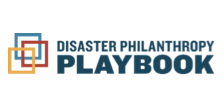
This Playbook is the comprehensive resource of best practices and innovative approaches to guide the philanthropic community in preparing for and responding to future disasters.
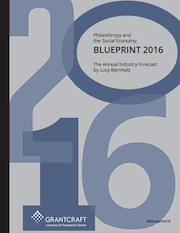
This weekly conference call series welcomed New Jersey-based grantmakers along with national funders and provided an opportunity for grantmakers to hear from a wide range of experts in the field of disaster philanthropy. This series started on November 5, 2012, one week after Sandy struck New Jersey, and continued through March 25, 2013.
This weekly conference call series welcomed New Jersey-based grantmakers along with national funders and provided an opportunity for grantmakers to hear from a wide range of experts in the field of disaster philanthropy. This series started on September 9, 2013 and concluded on November 4, 2013.
This weekly conference call series welcomed New Jersey-based grantmakers along with national funders and provided an opportunity for grantmakers to hear from a wide range of experts in the field of disaster philanthropy. Series 1 started on November 5, 2012, one week after Sandy struck New Jersey, and continued through March 25, 2013. Series 2 started on September 9, 2013 and concluded on November 4, 2013.
Funding Indigenous Peoples: Strategies for Support, looks at how funders collaborate with and bring support to indigenous communities around the world. Through examples from a diverse range of foundations, this guide explores how grantmakers work with indigenous peoples, the approaches they take, and the practices they find effective.
CSR executives have difficult jobs. They are expected to be strategic, aligned with business priorities, and focused on results. Yet success often requires navigating ever-changing expectations and a maze of competing priorities. This strategy toolkit, developed by FSG in partnership with CECP, identifies three tools for clarifying your strategy and transforming your portfolio.
The Silicon Valley Out-of-School-Time Collaborative invested in a cohort of regional nonprofit organizations to sustain and strengthen their ability to serve more students with stronger academic and social-emotional programming. A midcourse evaluation of the collaborative showed that grantees were stronger, programs were better and are reaching more students, and funders had adopted new, collaborative grantmaking practices. A second phase of the work was committed to more flexibility –– letting grantees drive the group’s planning and learning efforts, and manage consultants, budgeting and group communications. Grantees also opted to redirect the focus of the collaborative from capacity building to program development and evaluation, with the added goal of sharing effective afterschool and summer program models with others, both inside and outside the region.

Building a Culture of Capitalization in Your Organization, is written for nonprofit arts organizations and shares findings from NFF's study of 36 capital grants made by the Kresge Foundation between 2010 and 2012.

Recommendations for Capital Grantmakers, is written for arts funders who are looking to make smart and impactful investments.
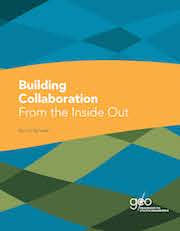
This publication is focused on building an organization’s collaboration muscles. It offers guidance on steps grantmakers and nonprofits can take to adopt a "collaborative mindset" and align values and practice so they can be better partners in collaboration.
This is a summary of the final meeting report of the listening session convened by the Office of the Assistant Secretary for Preparedness and Response Division for At-Risk Individuals, Behavioral Health, and Community Resilience and co-hosted with Grantmakers In Health.
What comes after “strategic...?” If you said, “planning,” you’re not alone. And for many leaders of community foundations, especially small ones who don’t have the time or money for a big process, anxiety is the feeling that follows. If that’s the case, this guide is for you.
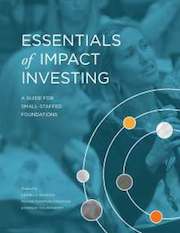
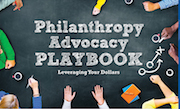
There is widespread and growing recognition in the nonprofit sector about the importance of evaluation — not only for measuring impact, but also for improving programs and better serving communities. While grantmakers generally see evaluation as necessary, most are not yet investing enough resources in this area.
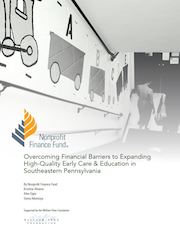
Building Healthy Communities (BHC) is a 10 year, $1 billion comprehensive community initiative launched by The California Endowment in 2010 to advance statewide policy, change the narrative, and transform 14 of California’s communities most devastated by health inequities into places where all people have an opportunity to thrive.
Case study from Philanthropy New York documenting the formation, challenges and ultimate success of the Education Funders Research Initiative – an unusual funder collaborative that brought together funders for and against charter schools, funders with different views of testing and accountability, and funders with vastly different approaches to supporting education reform to identify and advance shared priorities.
